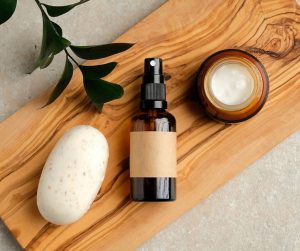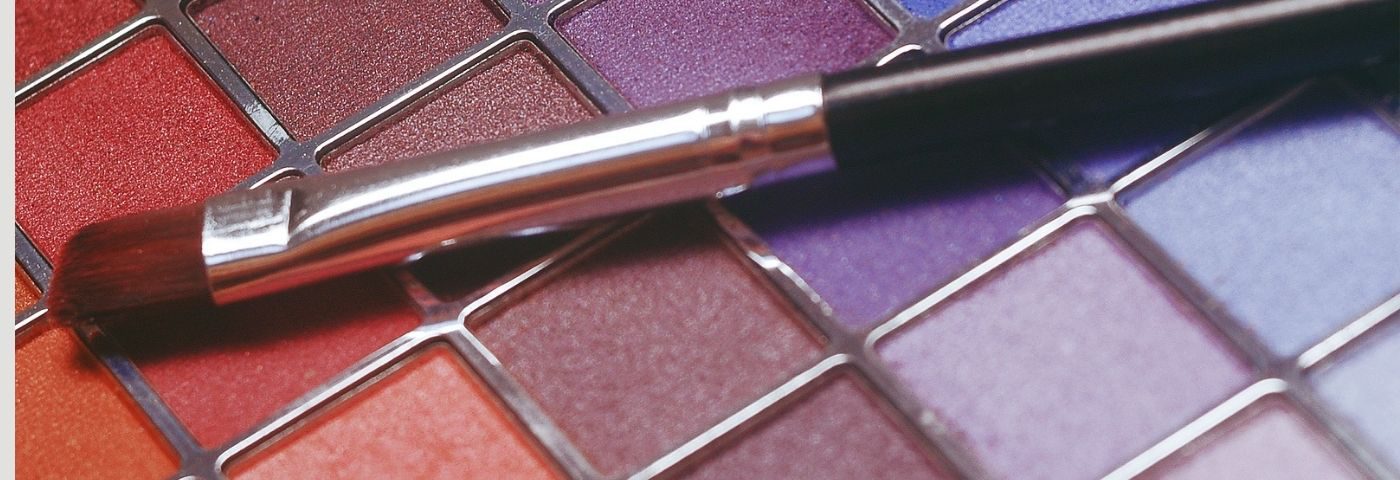The ‘lipstick effect’, a term coined by Leonard Lauder of Estée Lauder in 2001, is a phenomenon that describes how consumers increasingly turn to luxury items, such as make-up, to uplift their spirits during an economic recession. At its height, this trend resulted in an upward trajectory for the colour cosmetics market as consumers sought out new lipsticks, eye shadows and blushes. However, despite its performance during previous recessions, the pandemic has created a shift in consumer behaviour that has led to significant challenges for the sector.
However, over the past 12 months, some cosmetic and personal care categories have benefited. Take skincare, for example; the category has witnessed steady growth as consumers prioritise wellness and self-care during lockdown, of which skincare is a major component, and tackle the onset of ‘maskne’. But others, including colour cosmetics, have suffered. There’s been a decrease in demand for eyeshadows, blushes and other similar products due to the shift to working from home and a significant reduction in in-person socialising.
At present, consumers arguably have fewer reasons to buy and wear make-up. But the big question is, what will happen to colour cosmetics in the post-COVID world? There is much debate as to whether the pandemic has made it more acceptable to be barefaced in front of colleagues, therefore marking an unsurprising decline. However, there are industry experts that believe a rapid resurgence and category boom will emerge when events restart and venues reopen. The latter certainly seems plausible after a year of restricted lockdown life, and a growing appetite among consumers to go all out in looking their best when re-entering society to attend social occasions.
All eyes on me
Among the trends predicted for 2021 is a surge in bold, stand-out eye makeup. This has been accentuated by the compulsory wearing of masks, fuelling interest in new eye make-up trends. From bright-coloured eyeshadow, mascaras and lashes, this new ‘mascara effect’ has taken a hold on consumer shopping trends, with sales of eye make-up growing by 204% over a three month period during the height of the 2020 summer lockdown, according to Kantar. Supporting this, how-to guides for new eye looks amassed from more than 53 million views on TikTok alone, promoted with the popular #MaskMakeup hashtag.
 Helping formulators develop the next bright colour innovation, in-cosmetics Global exhibitor, Disruptive Materials recently launched its patented Upsalite material, a mesoporous magnesium carbonate ingredient that can be used in countless applications. Cosmetic Grade Upsalite is specifically created for use as an ingredient in cosmetic formulations, such as colour cosmetics. Scientific studies show that Upsalite has excellent oil absorption and setting properties and gives no flashback, supporting longer-lasting colour cosmetic products with superior shine control for all occasions. Upsalite also has the ability to modify rheology and thicken anhydrous liquid formulations and provide a smooth and velvety texture.
Helping formulators develop the next bright colour innovation, in-cosmetics Global exhibitor, Disruptive Materials recently launched its patented Upsalite material, a mesoporous magnesium carbonate ingredient that can be used in countless applications. Cosmetic Grade Upsalite is specifically created for use as an ingredient in cosmetic formulations, such as colour cosmetics. Scientific studies show that Upsalite has excellent oil absorption and setting properties and gives no flashback, supporting longer-lasting colour cosmetic products with superior shine control for all occasions. Upsalite also has the ability to modify rheology and thicken anhydrous liquid formulations and provide a smooth and velvety texture.
We have also seen Koel Colours develop a unique series of shades called Colors of Happiness. The pigments are perfect for R&D professionals experimenting with exotic colours with the aim of positively uplifting the moods of consumers.
Beauty brands will likely try to capitalise on this trend like Ciaté London, who have launched a new multi-chromatic shadow ‘Shadow Flip’ that is sure to be a hit this summer. The light creamy formulation generates a high-impact, otherworldly metallic finish and has a multi-chrome effect on the eyelids.
A personalised approach
Innovation will be key to the revival of colour cosmetics. According to Jenni Middleton, director of beauty at trend forecasting firm WGSN, the category will recover with the help of technology that delivers personalised printable colour cosmetics. Innovative solutions like this enable a customised makeup application and an ultra-personalised experience.
One of the newest innovations in this category is Le Teint Particulier, a custom-made foundation machine developed by L’Oreal subsidiary, Lancôme. It uses a patented foundation shade finder technology to measure and blend pure red, blue, yellow and white pigments, creating a unique shade that is specific to the user.
Another example is the world’s first 3D makeup printer called The Mink, which instantly transforms any image into wearable makeup. This will be particularly useful in the post-pandemic world as the user will be able to create a fresh product every day that is bespoke to them. Consequently, this will save money being spent on trial and error of other products, which is particularly important during a recession when disposable income is lower. Additionally, the freshness of the make-up will prevent the development of bacteria and viruses.
The future is clean
Another way for personal care industry professionals to encourage the rebound of colour cosmetics is to tap into the clean beauty movement, a trend that has been accelerated even further by the global pandemic. Clean beauty refers to the use of all-natural ingredients, and with a growing focus on wellness, there’s been a shift towards brands and products that fit these criteria. Ingredients in this category are considered more ethical and skin-friendly than those that are artificially made. They are particularly appealing to millennials, of which 70% want to know where the ingredients used in their favourite products originate, compared to just 54% of Generation X (born between 1965-1980).
 Many brands have already taken the clean beauty plunge like Kosas, who manufacture a vast spectrum of shade ranges with botanical-rich formulas. From liquid eyeshadows to tinted face oils, the company bans the use of over 2,700 different ingredients in its formulations, including parabens, aluminium, phthalates and sulfates, adhering to the Sephora and Credo “clean” standards. Another example is Ilia, a company on a mission to make clean beauty the norm. It carefully crafts each product with health-conscious ingredients, offering an array of products in shades that range from neutral to vibrant. Their popular Multi-Stick is designed to brighten cheeks and lips and comes in vibrant colours such as ‘Hot tangerine’, ‘Warm watermelon’ and ‘Light cool pink’ to name just a few.
Many brands have already taken the clean beauty plunge like Kosas, who manufacture a vast spectrum of shade ranges with botanical-rich formulas. From liquid eyeshadows to tinted face oils, the company bans the use of over 2,700 different ingredients in its formulations, including parabens, aluminium, phthalates and sulfates, adhering to the Sephora and Credo “clean” standards. Another example is Ilia, a company on a mission to make clean beauty the norm. It carefully crafts each product with health-conscious ingredients, offering an array of products in shades that range from neutral to vibrant. Their popular Multi-Stick is designed to brighten cheeks and lips and comes in vibrant colours such as ‘Hot tangerine’, ‘Warm watermelon’ and ‘Light cool pink’ to name just a few.
Transitioning to natural ingredients cannot be done overnight as it involves big changes across the production process. However, brands that do make the switch could benefit from this investment through improved consumer perception. Similarly, switching to sustainable ingredients, another trend accelerated by the pandemic, will have a parallel effect. Younger consumers are particularly eco-conscious, looking for beauty in a way that isn’t detrimental to the planet. Consequently, they will hold brands with similar views in high esteem.
Colour cosmetics and the ‘New Normal’
While there’s no doubt the colour cosmetics category has suffered over the past year and has been subject to an intensified rivalry with skincare, this is unlikely to be permanent. The easing of lockdown and a gradual return to normality will see consumers wanting to attend social gatherings in a bolder and brighter fashion than ever before, particularly in the hot summer months. Colour cosmetics provide the ultimate solution to this and is one of the main reasons why a resurgence is predicted. However, it’s important to note and adapt to changes in consumer behaviours. With a growing move towards a more natural look over the course of the pandemic, suppliers and product developers should invest in satisfying top trends like clean beauty, personalisation and sustainability, as these will prove even more difficult to resist.
Interested in learning more about colour cosmetics?
Get technical with a deep-dive on lipstick formulation here.

